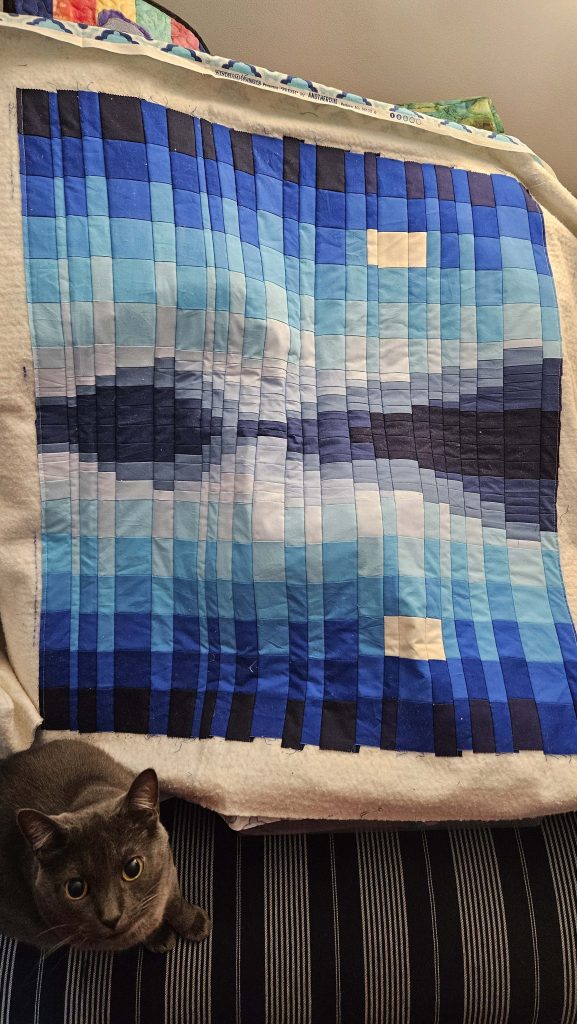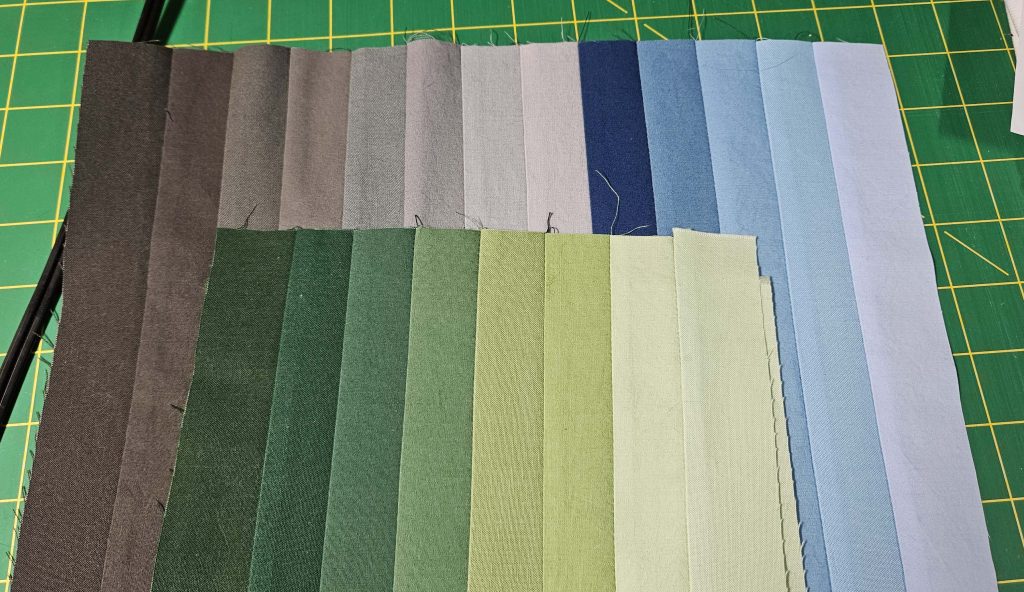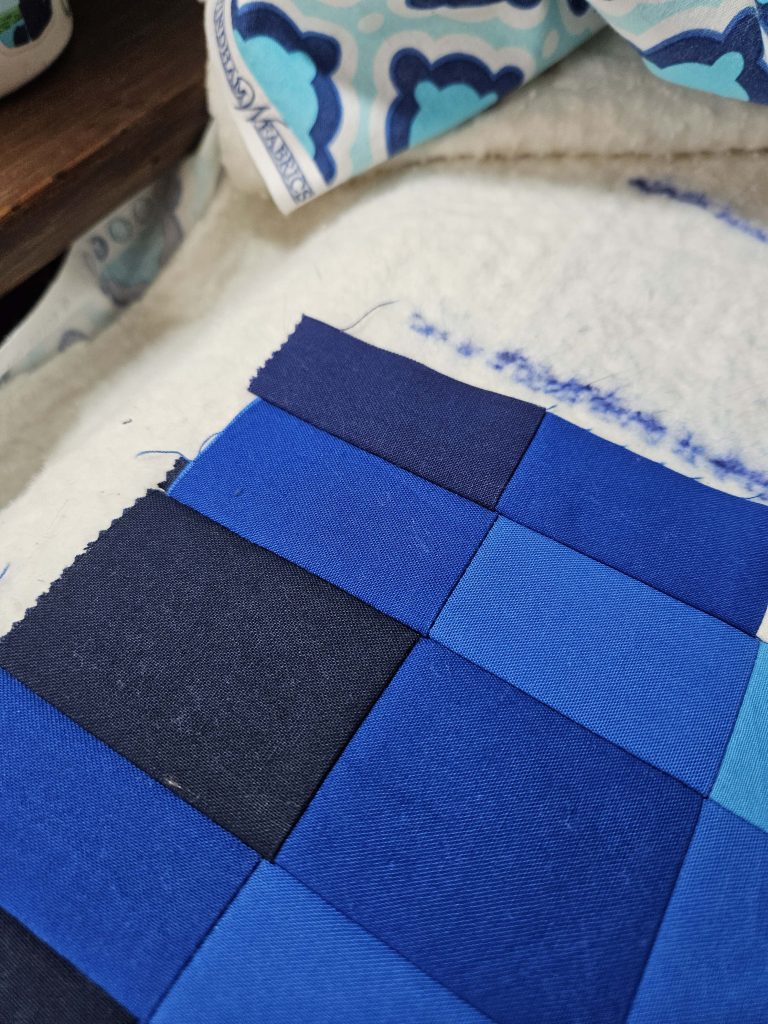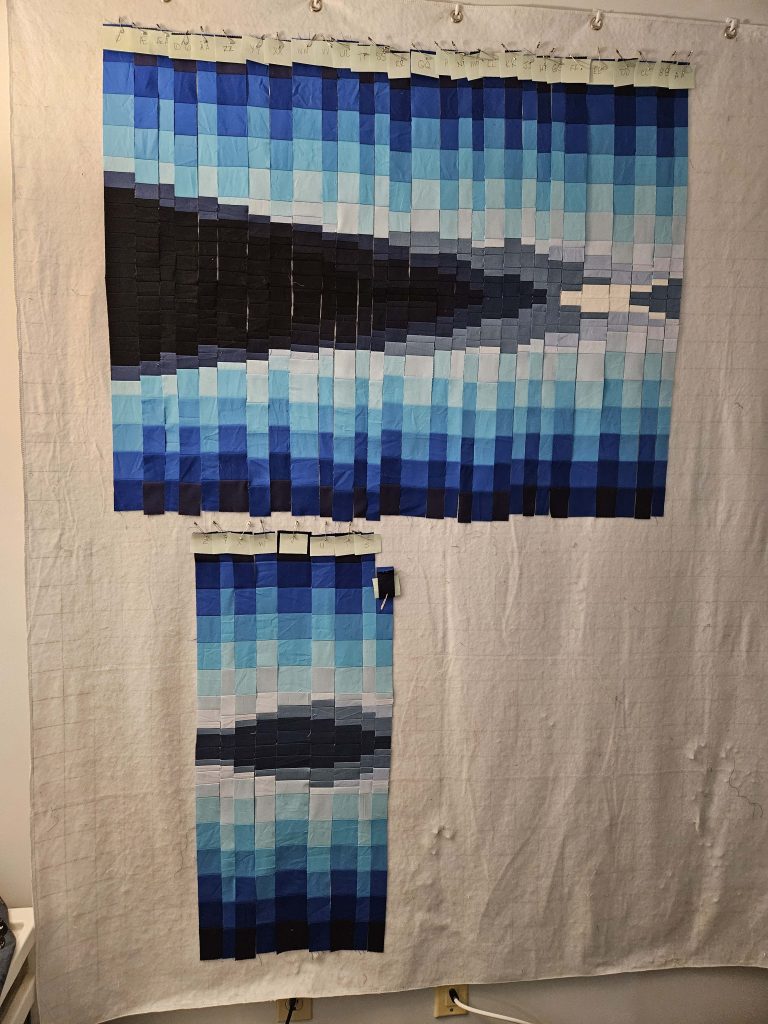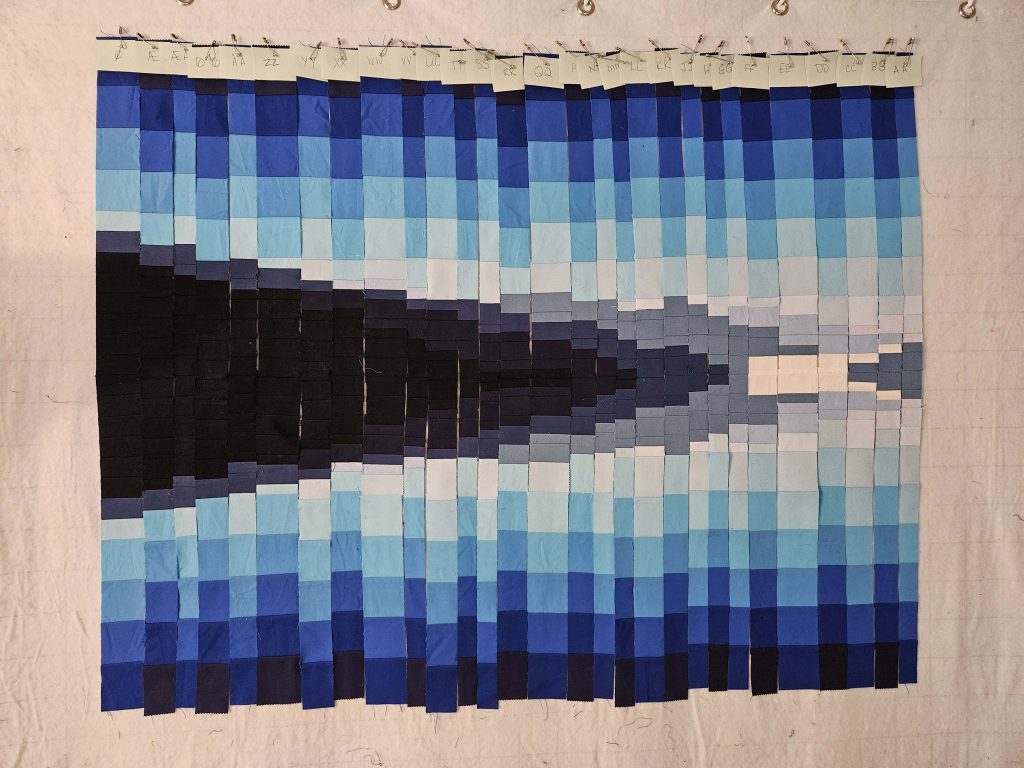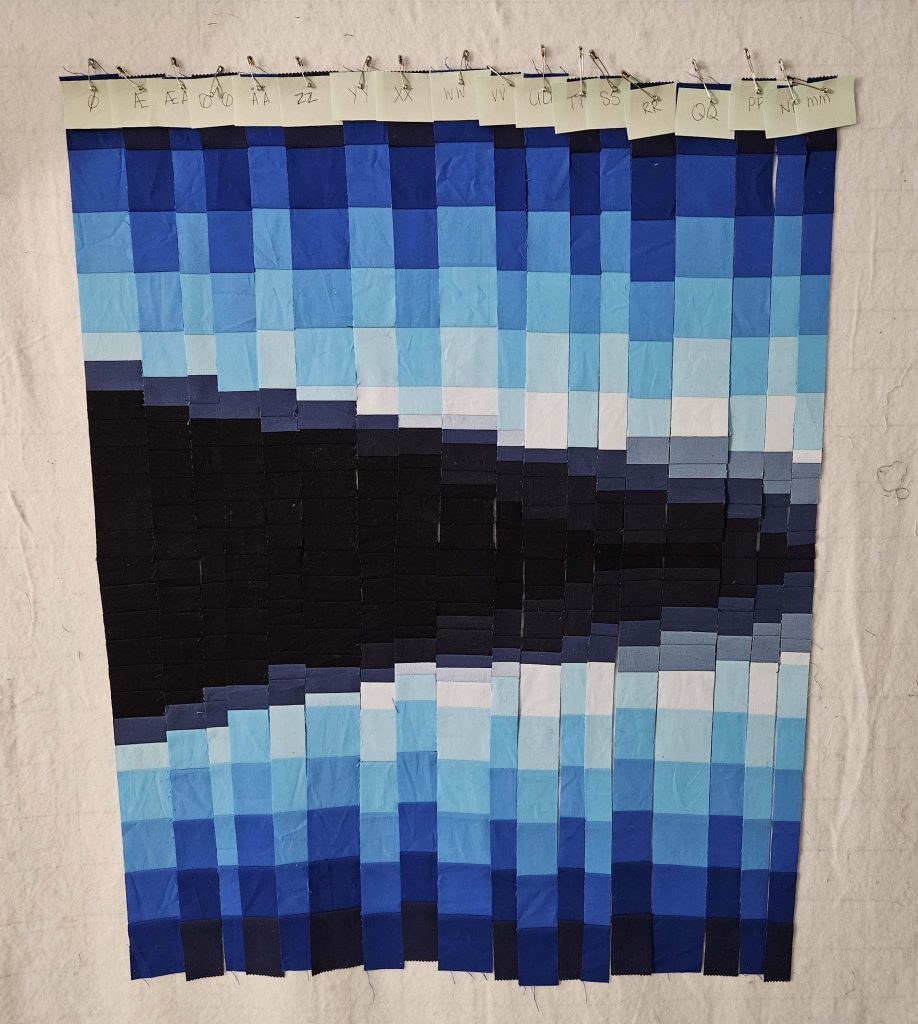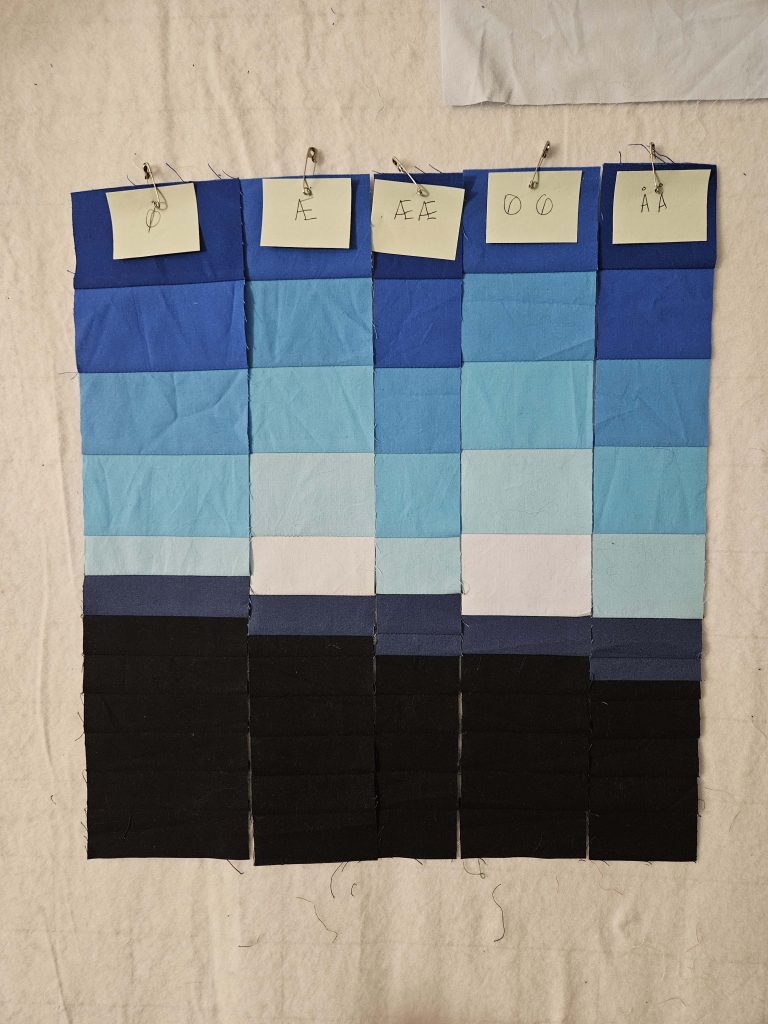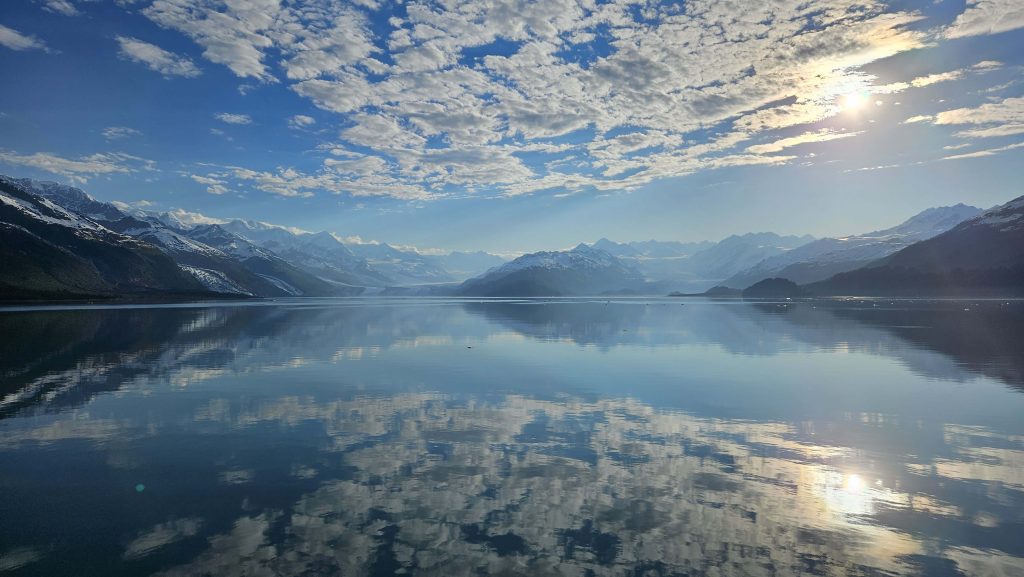The College Fjord quilt top is finished! Well, the quilt-as-you-go portion is done, and it mostly came out well. It’s only slightly wonky, and while there are some things that are clearly not “right,” the overall effect is exactly what I was going for. I will save the final reveal for when the buttons have been sewn on to represent the clouds, though. That might be a while, depending on whether or not I can get a hold of the store where I bought the buttons.
I did not estimate the size of the buttons very well relative to the size of the quilt. A hundred buttons is a lot! Well, except when you want them to represent clouds on a 30”X50” quilt – then they become very small. When the quilt was done, I laid it out on my bed and took 50 buttons and scattered them across the sky of the quilt. It looked like a handful of buttons scattered on a quilt. I need more buttons, and I need different sizes of buttons.
I acquired those buttons from a gift shop in Alert Bay, BC, Canada when I was on an Alaska cruise last summer (the same cruise where I took the picture). Look up Alert Bay. It’s not that big of a place. I was able to locate the gift shop on Google Maps and find their website, and I sent them an email asking if they had any buttons I could purchase from a distance. I have not heard back. I need to call.
My goal is either to get another package of 100 buttons of the same size, or to get a package of 40 or 50 buttons that are slightly larger. My preference would be the larger buttons, but I don’t remember if they had any. I think a combination of bigger and smaller buttons would be effective in making it seem more like clouds. But first I need to see if I can even get any more buttons from the shop!
If I can’t, I might have to improvise. If anyone has any leads on 2” diameter mother-of-pearl buttons, let me know.

